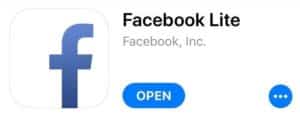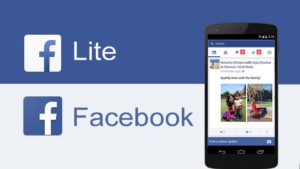You might have asked yourself why people are using Facebook Lite instead of the full version of the app. The answer is simple and that is no longer a mystery. As the name suggests, it is a lighter version of the famous social networking mobile app.

Brief History
In June 2015, Facebook Lite came into existence for the purpose of taking on the emerging markets. In fact, it has become the version of Facebook with the fastest growing user base at 100 million active users on a monthly basis.
Its APK is also quite portable which barely reached the 1MB mark. This only means that people can have the ability to download it in just a few seconds even with slow connectivity. The app is even more popular in the countries of Brazil, Mexico, India, Indonesia, and the Philippines.
Why You Need Facebook Lite
The significance of having a Facebook account over the phone is definitely a great experience for mobile users. However, the experience can be different for people exposed to certain network conditions and type of hardware.
Despite the fact that 96% of people around the world are covered with 2G mobile networks, there are at least 1.6 billion people who experience the unavailability of mobile broadband networks. This makes data access not so conducive.
People utilizing the inconvenience of 3G networks may have encountered difficulty in accessing data. Most of them encounter the biggest barriers in the delivery of excellent mobile communication, which include intermittency and stability of the Internet connection.
Architecture Of Facebook Lite

Considering the constraints, the architecture was run on a proxy server architecture having a very thin client. In this case, the Lite architecture was designed to allow the server side to do the heavy lifting. Thus, it enabled the app to work well even on low-powered devices such as the LG Optimus ME.
The client will talk only to the single server in one session. Likewise, the server will be able to push data to the client aside from the client requesting data. At the same time, Lite uses the custom message protocol on top of the TLS instead of the HTTPS protocol.
Data Efficiency and Slow Connectivity
The network stack in Facebook Lite will be able to optimize for working on 2G networks, aside from reducing of data usage. Among the biggest challenges of a 2G network is the establishment of a connection that can be so slow, which can take multiple seconds. The use of a single connection by Facebook Lite would facilitate traffic towards the backend, which then reduces the issues in comparison.
Android Device Performance In Every Emerging Market
The goal of Facebook Lite was to work well even on very low-powered devices, which can be found in emerging markets. One of the mobile devices with very restrictive specifications is the Samsung Galaxy Y at 600MHz processor, 180MB of internal memory, and the 290MB of RAM.
Part of this campaign was to support devices running Gingerbread. So the client architecture has to ensure that the usage of the CPU, RAM, and storage has to be minimized. The Lite server also makes sure that resource-intensive tasks, such as screen layout, animations, and other heavy user-interface interactions will be avoided.

New Version Of Facebook Lite
Earlier in 2018, Facebook Inc has announced the release of a stripped down version of Facebook Lite. This will be forwarded to more countries, such as developed ones, in order to attract users finding it hard to make it work amidst the slower mobile data connections.
This new rollout will be made available to users in more countries, which include Australia, Canada, France, Germany, Ireland, New Zealand, United Kingdom, and the United States.

